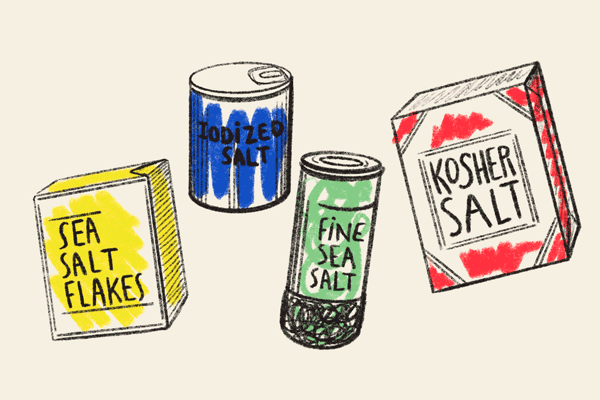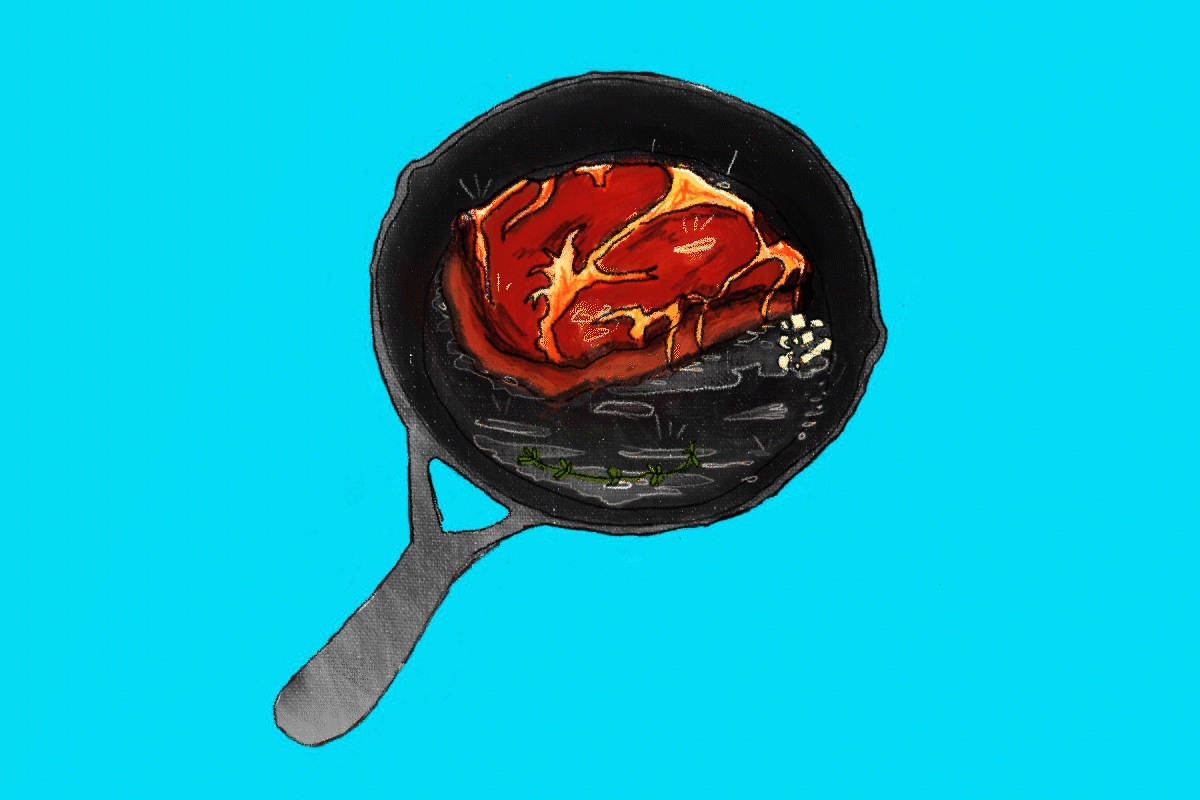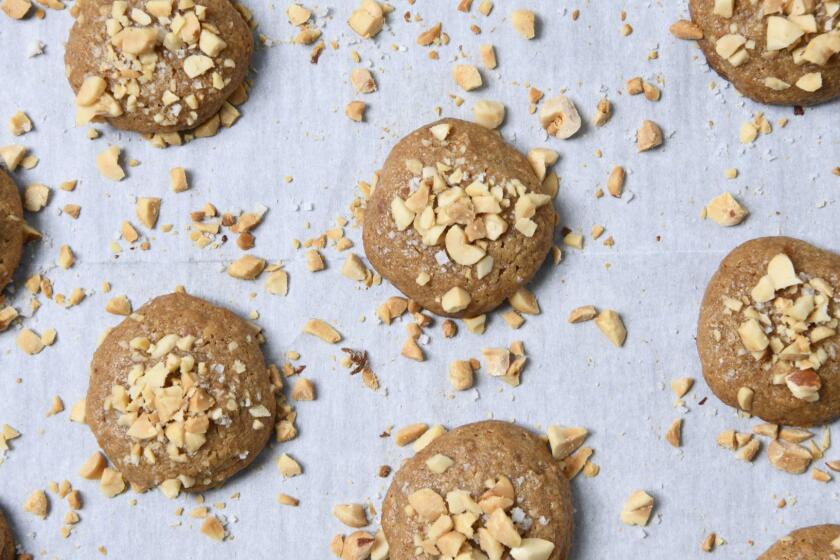Want to drastically improve your cooking? Get the right types of salt and use them well

- Share via
Salt often makes the difference between a good dish and a great dish. To season with it right and well, it’s helpful to understand the different types of salts and the best ways to use them.
Where does salt come from?
All salt comes from the sea in some form, whether it’s taken from the water or pulled out of the ground where seas were long ago. The distinctions between the types we use for food lie in their source and processing.
True “sea salt” is harvested from shallow marshes, ponds or other low-lying areas. It comes from either sunshine and wind evaporating the water and leaving behind the salt or from raking salt off the surface of still water.
Other cooking salts come from solution mining. After water dissolves salt deposits, the brine solution is evaporated and purified. The salt left behind is then dried and refined, ending up as almost entirely sodium chloride.
The harvesting and processing determine the shape, size and taste of cooking salts. Here’s a guide to the most commonly used types:
Kosher Salt
Kosher salt was originally made for use in kashering, which involves salting meat to draw out its blood according to Jewish dietary laws and traditions. Its coarse grains work best in that process and also in other forms of cooking and baking. Now it is the de facto salt of most professional kitchens and cookbooks.
Diamond Crystal Kosher Salt: My go-to salt for nearly everything. Diamond Crystal stands out among brands of kosher salt because its crystals are large enough to pick up easily for sprinkling yet still dissolve readily. Most important, it tastes less salty than other brands of kosher salt. This is the brand you should use for any measured amounts of kosher salt in recipes by me and my colleague Ben Mims — and it is the brand used by almost all professional cooks we know.
Morton’s Kosher Salt: This blue-box brand may be easier to find, but I don’t recommend it because the larger crystals taste much saltier and don’t dissolve as easily, sometimes making food taste salty in an unpleasant way. If you have it and want to get rid of it without wasting it, use it to salt boiling water for pasta. If it is what you can find at the store or prefer, use ¾ teaspoon for every teaspoon of kosher salt called for in our (and most) recipes.
An unseasoned steak browns faster and keeps smoke to a minimum, the perfect combination for cooking chops at home.
Fine Salt
The sand-like grains of fine salt dissolve the most readily.
Iodized Salt: I grew up shaking the white fine-sand salt that came from Morton’s blue cylinders. You probably did too. They sell a regular table-salt option and one with iodine, which is added to prevent deficiencies that can affect thyroid function and because it is an anticaking agent (i.e. it won’t clump in the salt shaker.). Unless you need the extra iodine, you can skip this salt’s metallic taste. If you do use it, 1 teaspoon is the equivalent of 2 teaspoons Diamond Crystal kosher salt.
Fine Sea Salt: If you prefer the more mineral taste of sea salt, you can use fine sea salt for cooking and baking. It dissolves quickly and is good for last-minute sprinkling when you want to add saltiness but not texture.
1 teaspoon Diamond Crystal kosher salt = 3/4 teaspoon Morton’s kosher salt = 1/2 teaspoon fine sea salt or iodized salt
Salt Flakes
Salt harvested from the sea can come as flakes or in other coarse textures that are ideal for finishing dishes with an extra hit of flavor and a bit of crunch. Large crystals need to be ground before use; I prefer flakes.
Sea Salt Flakes: The delicate crunch and mild taste of pretty snowflake-like salt are ideal for sprinkling on dishes after cooking. Maldon is the most readily available brand; options from Jacobsen Salt Co. are easy to find as well.
Salted Chunky Peanut Butter Cookies
How to Salt
Once you’ve stocked your pantry with salt, you need to use it properly. Regardless of what you have on hand, you want to follow these steps to seasoning food.
1. Get to know your salt. Even if using my recommended option (Diamond Crystal kosher), know that salt can vary in its saltiness. Whatever you’re using, taste a tiny bit by itself first. If you happen to have multiple brands, taste them one after the other (with lots of water in between) to understand their differences.
2. Keep tasting. Every culture and cook salts food differently. Some go heavy from the start, some sprinkle throughout the process and some season only at the end. Many do a mix of all three, but whichever method you’re following, keep tasting your food as you cook. Start by nibbling ingredients that can be tasted raw and taste at every stage when it’s safe to try the food (avoid raw poultry and the like). Remember that you can always add more salt but you can’t take it away, so taste, sprinkle, taste, sprinkle.
3. Strive for balance. Salt doesn’t work alone to make food taste great. Its role is to enhance the natural flavors of whatever you’re cooking and to tie everything together. When you’re tasting for salt, ask whether you also want more umami, richness, acidity, heat or freshness. If you are going to add more umami (a dash of soy sauce), fat (like another pat of butter), acid (a squirt of lemon juice), heat (a pinch of chile) or freshness (a handful of herbs), do that first, then taste and season with salt. You can do this throughout the cooking process and be sure to do it just before serving. And a little dish of sea salt flakes to pass around the table never hurts either.
More to Read
Eat your way across L.A.
Get our weekly Tasting Notes newsletter for reviews, news and more.
You may occasionally receive promotional content from the Los Angeles Times.













